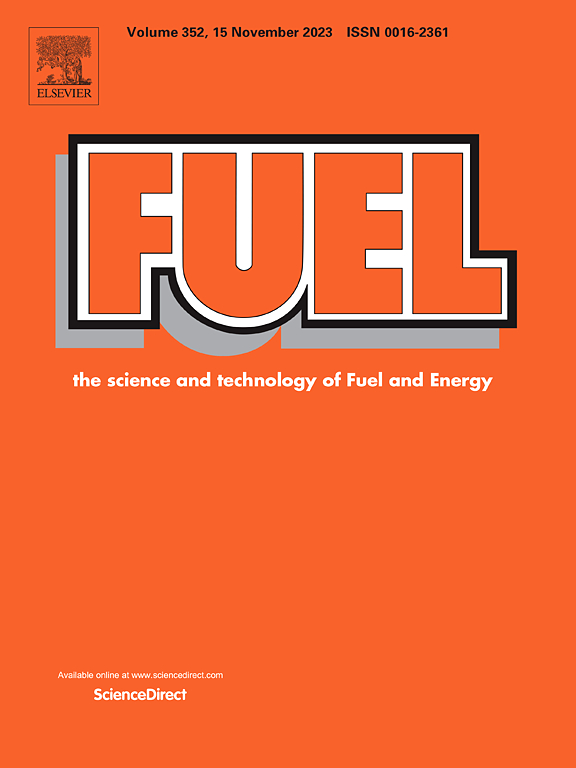Lattice tensile strain regulated by ruthenium doping in NiCoP anchoring on carbonized wood for promoting hydrogen evolution reaction
IF 7.5
1区 工程技术
Q2 ENERGY & FUELS
引用次数: 0
Abstract
It has become increasingly urgent and imperative to develop sustainable, efficient and stable self-supporting electrodes for electrocatalytic hydrogen evolution reaction (HER). Here, trace Ru-doped NiCoP in situ grown and anchored in carbonized wood (Ru-NiCoP/CW), exhibits an excellent HER catalytic activity. At −10 mA cm−2, it shows an extremely low overpotential and a small Tafel slope of − 25 mV and 60 mV dec−1, respectively. And it has a long-term stability of 100 h at −50 mA cm−2. Such impressive HER performance of Ru-NiCoP/CW is mainly due to the strain effect and electronic effect induced by the in-situ growth of trace Ru-doped bimetallic phosphide NiCoP on the porous self-supporting CW carrier. This method is believed to provide a valuable reference for providing bimetallic phosphides with very low Ru content on carbonized wood electrode materials.
碳化木材上NiCoP锚定中钌掺杂调控晶格拉伸应变促进析氢反应
开发可持续、高效、稳定的电催化析氢电极已成为电催化析氢反应的迫切需要。在这里,微量的ru掺杂NiCoP原位生长并锚定在碳化木材中(Ru-NiCoP/CW),表现出优异的HER催化活性。在−10 mA cm−2时,它显示出极低的过电位和小的Tafel斜率,分别为−25 mV和60 mV dec−1。在−50 mA cm−2下具有100 h的长期稳定性。Ru-NiCoP/CW具有如此优异的HER性能,主要是由于微量ru掺杂双金属磷化物NiCoP在多孔自支撑CW载体上原位生长所引起的应变效应和电子效应。该方法为在炭化木电极材料上制备极低钌含量的双金属磷化物提供了有价值的参考。
本文章由计算机程序翻译,如有差异,请以英文原文为准。
求助全文
约1分钟内获得全文
求助全文
来源期刊

Fuel
工程技术-工程:化工
CiteScore
12.80
自引率
20.30%
发文量
3506
审稿时长
64 days
期刊介绍:
The exploration of energy sources remains a critical matter of study. For the past nine decades, fuel has consistently held the forefront in primary research efforts within the field of energy science. This area of investigation encompasses a wide range of subjects, with a particular emphasis on emerging concerns like environmental factors and pollution.
 求助内容:
求助内容: 应助结果提醒方式:
应助结果提醒方式:


